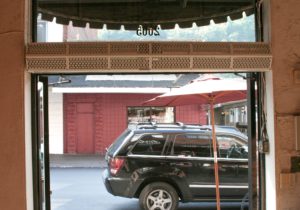
Published on the NEWS on April 22, 2013
Whether it’s a wintery 20°F or a steamy summer day, the front doors are always propped open at Fortunes Coffee Roastery in Pittsburgh’s Strip District. One of the first policy changes store manager Paula Sciullo made after her family bought the 20-year-old independent coffee retailer last year was an “always open” door policy as a welcoming gesture to passersby. Situated on the mile-long wholesale-food area near downtown Pittsburgh, the coffee shop is nestled in with specialty shopping and nightlife establishments.
Since patrons are an even mix of impulse and destination shoppers, the sales results were immediate. Foot traffic into the 1,200-square-foot store increased dramatically, by 20-30 percent. That increase in foot traffic was accompanied by a similar increase in sales, Sciullo said.
“Just about everyone who comes through the door buys something, so any strategy, such as an open door, can reap benefits,” Sciullo added.
But how does Scuillo maintain a comfortable indoor environment while keeping her door wide open to the wildly fluctuating Pittsburgh weather? By using an air curtain to create an invisible wall of air that keeps the outside elements — including dust, exhaust, and insects — outside while keeping the inside environment consistent and comfortable.

Scuillo installed a Zephyr air curtain manufactured by Berner Intl., New Castle, Pa., above the doorway in order to minimize energy losses and maintain indoor air comfort within 3-5°F of indoor set-point temperatures. The Zephyr helped maintain a consistent and comfortable environment for employees and patrons alike near the point-of-purchase entrance area.
Curtain Call
Air curtains aren’t a new innovation — they’ve been used for decades in industrial applications. However, retail stores — from convenience stores and apparel outlets to large drug stores and big-box merchants — are now using air curtains to reduce energy losses and increase indoor comfort in both front- and back-end doors. Most recently, retailers are circumventing the huge costs of constructing vestibules by instead combining air curtains with automatic doors, which studies last year proved are far more efficient than the traditional vestibule.
Sciullo’s father recommended air curtain technology for the store because he has bought and used them for decades in his own industrial material-handling, warehousing, and trucking-dock businesses.
The 72-inch-wide Zephyr air curtain is designed to strategically discharge air from 8 feet above the doorway down to the floor and split a few inches outside the threshold. Proper air velocity, volume, and uniformity will successfully separate the indoor and outdoor environments. Outdoor air, vehicle-emission fumes, and insects can’t penetrate a properly designed, manufactured, and installed air curtain, according to the Air Movement & Control Association (AMCA), a trade association that certifies air curtain model specifications. In heavy-traffic applications, such as coffee retailing, the air curtain also helps keep the floor dry during inclement weather, which reduces accidents and floor maintenance.
With such an increase in foot traffic and sales, Scuillo said other retailers along the strip plan to follow Fortunes’ example and install their own air curtains this year.